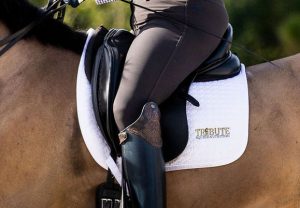When I was ten, I broke my femur, and had a pin put through my left knee for a month. It was removed, but that trauma, combined with years of running and triathlons, a genetic predisposition to crummy joints, and a lifetime of mounting from the left, that knee has ached for years. It’s been getting worse, so I finally made an appointment with a local orthopedist.

I was quizzed about my symptoms – aching or stabbing? localized or specific? when moving, or all the time? – on a form, and then shepherded into an exam room. The doctor spent about 2 minutes with me, moving my knee, putting her hand on it while it moved, and then sent me off to x-ray. 2, maybe 3 views? The doctor reviewed them, diagnosed me with deterioration of the cartilage above my knee, and then gave me three choices: a daily NSAID, joint injection with a steroid, or joint injection with Hyluronic Acid (which, by the way, she said was unlikely to be covered by my insurance until I’d tried the steroid, given my age).
It should go without saying that I had some questions.
When I think about how my horses are treated when they go see my exceptional sports medicine veterinary practice, Virginia Equine Imaging, it’s a very different experience. Their exam is thorough and holistic, even if I have a specific complaint; they watch my horses at rest and in motion, both free and with the rider if possible, and perform flexion tests. They rule things out one at a time, and it takes time.
Now horses can’t talk, so for sure the exam has a practical reason to look at the whole body instead of just the specific complaining part. And I recognize that VEI, and my vet, Dr. Cricket Russillo, are elite-level, world class sports medicine specialists, and so it’s not an apples-to-apples comparison to the local human orthopedist in my wee town. But whenever I have a horse see Dr. Russillo, the conversation always goes beyond pain management.
That was my first question for my orthopedist. Ok, cartilage doesn’t grow back, I know. But my options are whole body painkiller or local painkiller? What about something to help condition the cartilage? Not until I’d tried the painkiller, according to insurance.
Ok, I said, let’s think outside the box. Is there something like Adequan for humans? Nope. Legend? Nope. What about a biologic, like Platelet Rich Plasma? That exists in humans… but isn’t covered by insurance, so I’d have to pay for it out of pocket.
So that’s that. Apparently we do more to help slow the decline of a horse’s joints – horses, with a lifespan of 20 years – than we can do for humans. And it would seem to me that there would be some wisdom in getting ahead of problems like mine, that will inevitably be more expensive to treat down the road, with things like joint replacements. Fortunately for me, the NSAID is working great, and I’m able to go about my life like before. And also fortunately for me, I’ve got time, hopefully such that modern human medicine can catch up to all that we’ve learned to do to help our equine friends.